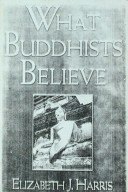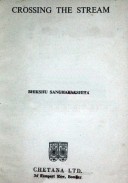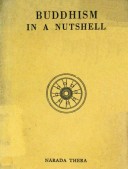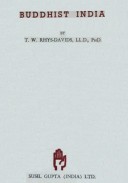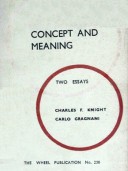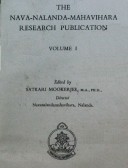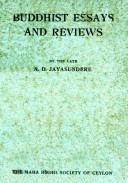Tìm Sách
Sách tiếng Anh-English >> What Buddhists Believe
Thông tin tra cứu
- Tên sách : What Buddhists Believe
- Tác giả : Elizabeth J. Harris
- Dịch giả :
- Ngôn ngữ : Anh
- Số trang : 216
- Nhà xuất bản : Oneworld Publications
- Năm xuất bản : 1998
- Phân loại : Sách tiếng Anh-English
- MCB : 1210000008196
- OPAC :
- Tóm tắt :
CONTENTS
Preface
Introduction
Creating the Radio Programmes
The Authority of the Practitioner
- The Buddha: Teacher of Gods and Humans
The Texts
An Extraordinary Man
Biographies of the Buddha
After the Buddha’s Death
Contemporary Experience
- What the Buddha Taught
A View of Life
A Way Out of Suffering
The Preciousness of Human Life
The Wheel of’Life
The Path
Stages on the Path
- Meditation: The Way to Enlightenment
Tranquillity Meditation
Insight Meditation
Developing Compassion
Visualization
Mantras
Obstacles and Benefits
Creating a Discipline
The Teacher
The Hermit Tradition
- Buddhism and Social Engagement
Principles for Social Engagement
War and Violence
Social Development and Ecological Awareness
Humanitarian Aid
- Women in Buddhism
Women in the Texts: A Liberating Message?
Women in Historical Tradition
Patriarchal Elements?
Challenging Patriarchy
Buddhism and Women in the West
Sakyadhĩtã: Daughters of the Buddha
The Contribution of Women
- Challenging and Reinforcing Culture
A Missionary Religion?
The Challenge to Traditionally Buddhist Societies
The Challenge to Traditionally Non-Buddhist Societies
The Influence of West on East
Appendix: A Brief Guide to the Pali and Sanskrit Buddhist Textual Tradition
The Contributors
Glossary
Further Reading
Index……………………….213
PREFACE
In the last thirty years the West has discovered an unprecedented interest in Buddhism. With its lack of any patriarchal ‘creator’ god and doctrinal dogmatism; with its possibility for individual spiritual guidance and opportunity for personal transformation as the result of personal effort, Buddhism has provided an attractive alternative to post-Christian societies where all too often the concept of God has been devalued, credal formulae seem arcane and lack of strong leadership has left flocks unfed and vulnerable to the attack of wolves.
The Western Buddhist Order has been established. Tibetan refugees, victims of Chinese policies, have brought a distinctive form of Mahãyãna Buddhism, and as a result of the 1960s and 1970s, a whole generation has discovered meditation through less orthodox means. As a result of increased interest, departments of Religious Studies have included Buddhism in general courses and existing university schools have developed their studies of Pali and Sanskrit texts. Student organizations, inspired and augmented by students from traditionally Buddhist countries, have flourished and a whole new Western perspective on Buddhism has resulted.
No religion transfers from one place to another without cultural adaptation: the presence of a Tibetan Temple complete with monks, nuns and Dhamma teaching on the hillsides of Scotland proves that. Samye Ling is dedicated to the teaching and practice of distinctive Tibetan Buddhism, to the preservation of Tibetan culture and to the charitable actions which are integral to Buddhism. Rokpa, the Tibetan word for charity, is the name of their charitable trust. But Samye Ling is more than a Tibetan monastery transferred to a Scottish hillside: while the traditional ‘long retreat’ of three years, three months, three weeks and three days is practised by some, the Abbot permits monks and nuns to take vows for a single year to test their vocation. In addition, the centre provides support for some with drug and personal problems, and on occasion, released convicts. It also promotes an active programme of Dhamma teaching, meditation and practical activities, including soup kitchens as far apart as Nepal and Moscow, Glasgow and Sikkim.
When the commitment to social engagement and all that implies in ecological terms is added to the traditional elements of meditation, the appeals of Buddhism to non-Buddhist societies are obvious. Not so appealing have been some recent high-profile sexual scandals surrounding certain monks, notably in Thailand, raising the inevitable question: while Buddhism has given so much to the West and non-Buddhist societies, has the growth of a Western Buddhism inspired and challenged traditional Buddhist culture?
No one is better equipped to explore the diversity of Buddhism than Elizabeth J. Harris. It was her scholarly field-researches, combined with her wide knowledge of and sympathy with Buddhist lifestyles and practices, which enabled me to produce the BBC World Services Series The Way of the Buddha. For me, it was a journey of genuine enlightenment: my knowledge of Buddhism was limited to studying history and text, dogma and theory, but travelling through Sri Lanka, Thailand and Cambodia with Elizabeth, I began to see at first hand the way in which a faith influences not only individuals but whole societies; where its power can transform broken and wasted lives as well as recreate new life in devastated communities.
In this book, Elizabeth has brought together both sides of a religion – the history and dogma and its practice and meditation, together with the power Buddhism can have over individuals. Not only does it explain what Buddhism is, it helps the reader understand why it is so important to those who practise The Way of the Buddha.
David Craig
June 1998
 Facebook
Facebook
 Google
Google
 Google+
Google+
